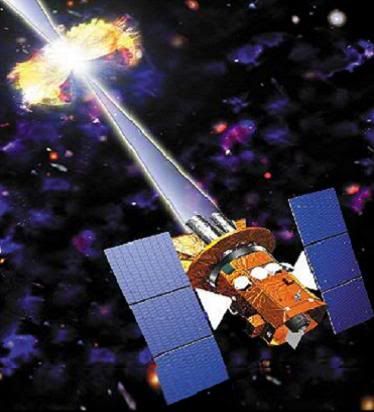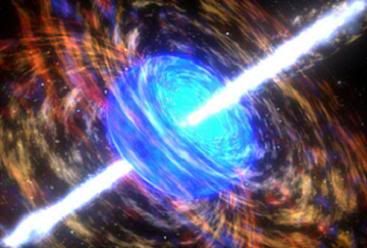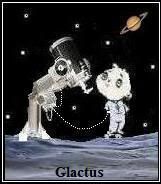Post by glactus on Nov 3, 2011 0:06:10 GMT
The Swift Gamma-Ray Burst Mission consists of a robotic spacecraft called Swift, which was launched into orbit on 20 November 2004 on a Delta II 7320-10C expendable launcH vehicle. Swift is managed by the NASA Goddard Space Flight Center, and was developed by an international consortium from the United States, United Kingdom, and Italy. It is part of NASA's Medium Explorer Program (MIDEX).

The Swift Gamma Ray telescope
Swift is a multi-wavelength space-based observatory dedicated to the study of gamma-ray bursts (GRBs). Its three instruments work together to observe GRBs and their afterglows in the gamma-ray, X-ray, ultraviolet, and optical wavebands.

Swift and a Gamma Ray burst
Based on continuous scans of the area of the sky which one of the instruments monitors, Swift uses momentum wheels to autonomously slew into the direction of possible GRBs. The name "Swift" is not a mission-related acronym, but rather a reference to the instrument's rapid slew capability, and the nimble bird of thE same name. All of Swift's discoveries are transmitted to the ground and those data are available to other observatories which join Swift in observing the GRBs.

A Gamma ray burst
In the time between GRB events, Swift is available for other scientific investigations, and scientists from universities and other organisations can submit proposals for observations.
The Swift Mission Operation Center (MOC), where commanding of the satellite is performed, is located in State College, Pennsylvania and operated by the Pennsylvania State University and industry subcontractors. The Swift main ground station is located at the Broglio Space Centre near Malindi on the coast of Eastern Kenya, and is operated by the Italian Space Agency. The Swift Science Data Center (SDC) and archive are located at the Goddard Space Flight Center outside WashingTONNC. The UK Swift Science Data Centre is located at the University of Leicester.
The Swift spacecraft bus was built by Spectrum Astro, which was later acquired by General Dynamics Advanced Information Systems.
To see interesting 9 minute video of the instruments used in calibrating gamma ray bursts after the information is received from space, just click on the link below. Has sound.
www.youtube.com/watch?v=crC5a9Xyz7k

Credits: These are non copywrite images
Text by Wikipedia
Video by YouTube

The Swift Gamma Ray telescope
Swift is a multi-wavelength space-based observatory dedicated to the study of gamma-ray bursts (GRBs). Its three instruments work together to observe GRBs and their afterglows in the gamma-ray, X-ray, ultraviolet, and optical wavebands.

Swift and a Gamma Ray burst
Based on continuous scans of the area of the sky which one of the instruments monitors, Swift uses momentum wheels to autonomously slew into the direction of possible GRBs. The name "Swift" is not a mission-related acronym, but rather a reference to the instrument's rapid slew capability, and the nimble bird of thE same name. All of Swift's discoveries are transmitted to the ground and those data are available to other observatories which join Swift in observing the GRBs.

A Gamma ray burst
In the time between GRB events, Swift is available for other scientific investigations, and scientists from universities and other organisations can submit proposals for observations.
The Swift Mission Operation Center (MOC), where commanding of the satellite is performed, is located in State College, Pennsylvania and operated by the Pennsylvania State University and industry subcontractors. The Swift main ground station is located at the Broglio Space Centre near Malindi on the coast of Eastern Kenya, and is operated by the Italian Space Agency. The Swift Science Data Center (SDC) and archive are located at the Goddard Space Flight Center outside WashingTONNC. The UK Swift Science Data Centre is located at the University of Leicester.
The Swift spacecraft bus was built by Spectrum Astro, which was later acquired by General Dynamics Advanced Information Systems.
To see interesting 9 minute video of the instruments used in calibrating gamma ray bursts after the information is received from space, just click on the link below. Has sound.
www.youtube.com/watch?v=crC5a9Xyz7k
Credits: These are non copywrite images
Text by Wikipedia
Video by YouTube


